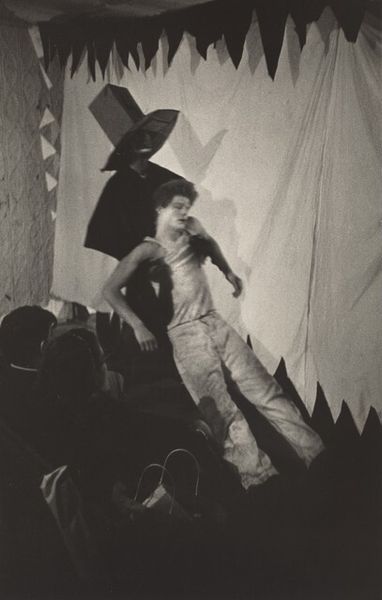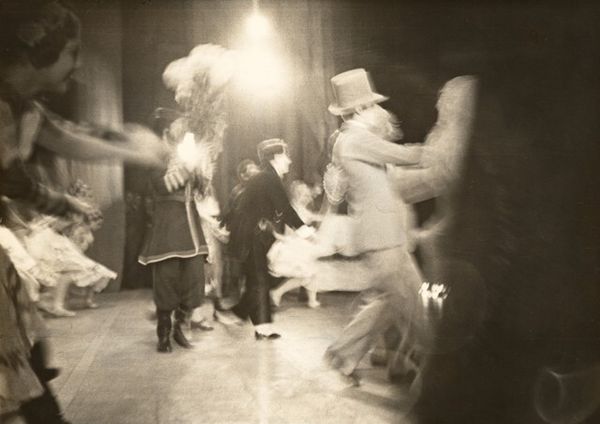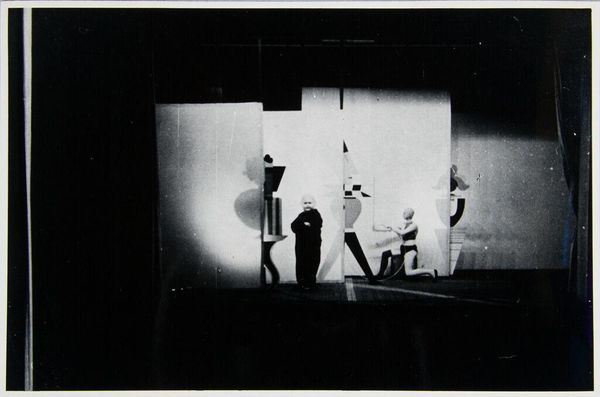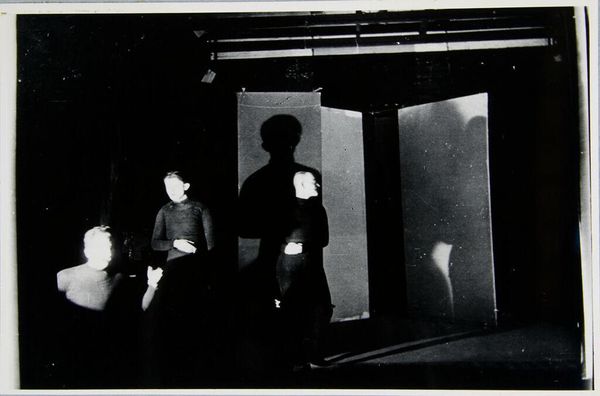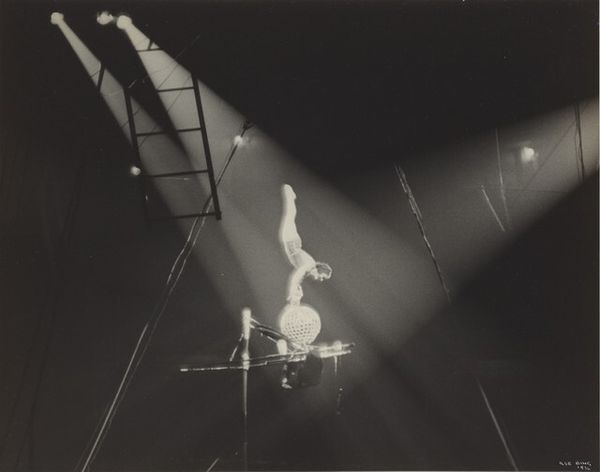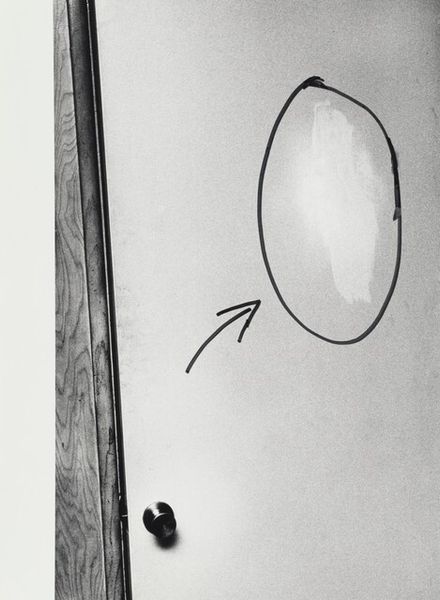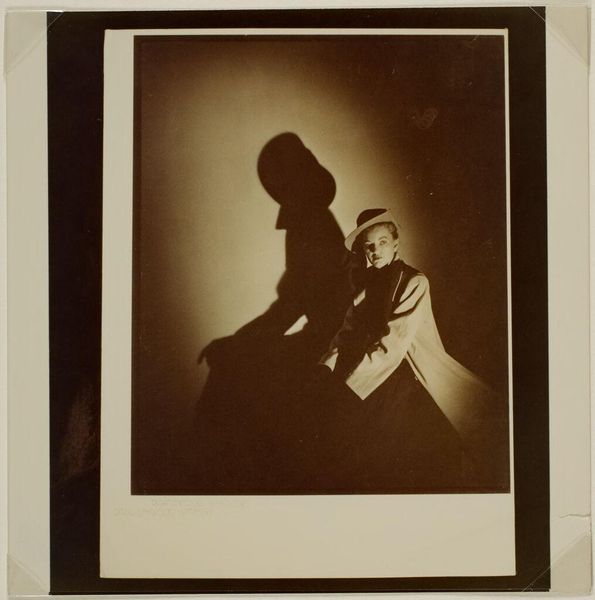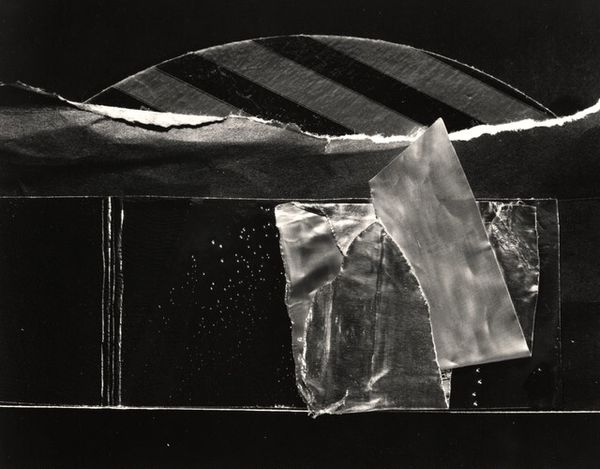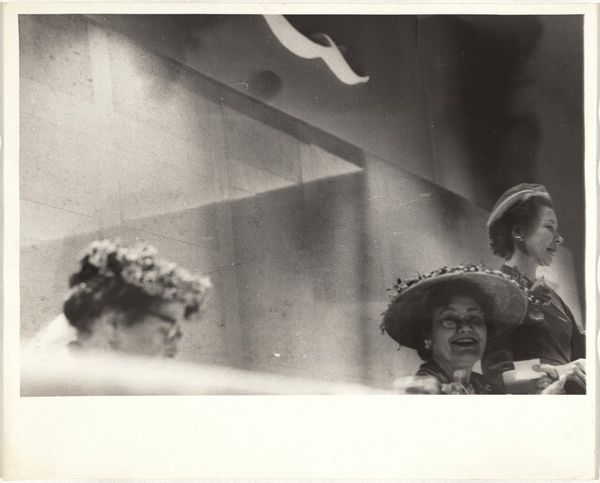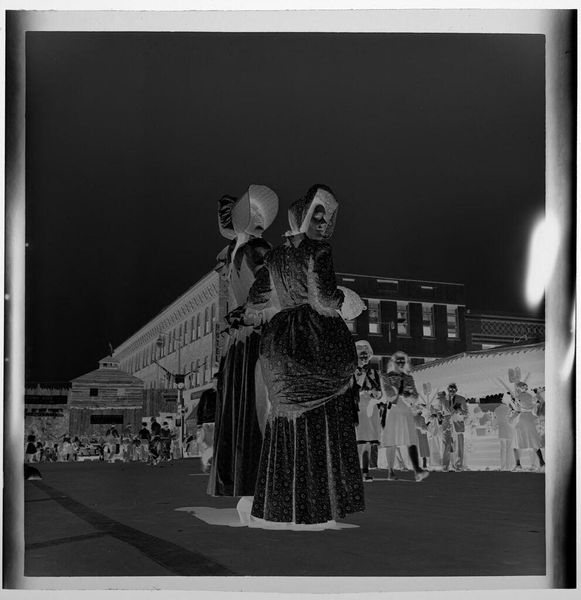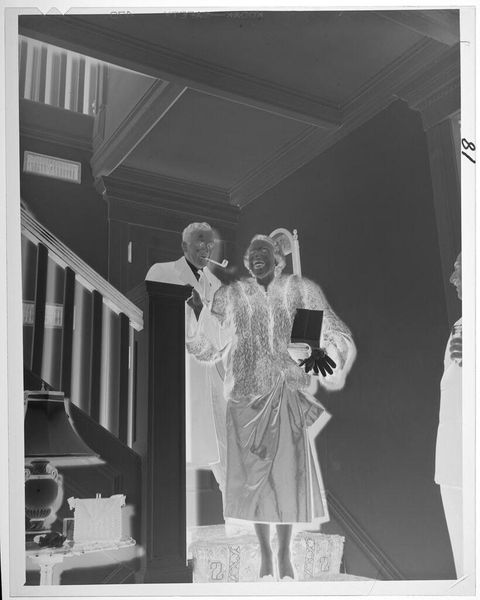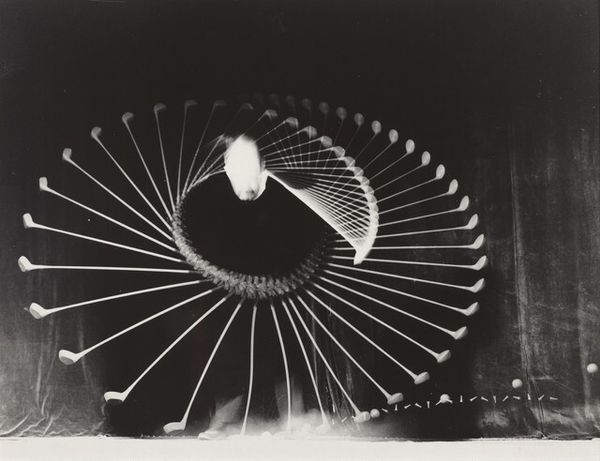
performance, photography
#
portrait
#
film photography
#
performance
#
black and white photography
#
figuration
#
photography
#
historical photography
#
monochrome photography
#
modernism
#
monochrome
Dimensions: image: 25.3 × 34.3 cm (9 15/16 × 13 1/2 in.) sheet: 27.7 × 35.3 cm (10 7/8 × 13 7/8 in.)
Copyright: National Gallery of Art: CC0 1.0
Curator: Let's turn our attention to "Ballet (Le Tricorne)," a striking photograph by Alexey Brodovitch, captured between 1935 and 1937. What are your initial thoughts? Editor: The blurry quality of the monochrome gives the scene a kind of spectral quality. The stage and dancers seem almost like memories fading at the edges. There's a haunting feel to it. Curator: Brodovitch, as art director for *Harper's Bazaar*, had a profound impact on the visual culture of the time, emphasizing movement and dynamism. This photograph is a testament to that, documenting a performance. I find myself questioning if we, as a public audience, consider what "performance" and access means within photography of such caliber? Editor: That's fascinating. The out-of-focus areas around the dancers certainly capture a sense of movement. The decision to emphasize these figures from ballet is interesting when contextualizing the image against contemporary understandings of gender and class. Can we know with confidence what choices made, or were those driven by technological limitations? Curator: Brodovitch cultivated a keen eye for capturing the fleeting beauty of dance and design in everyday moments and highly stylized theatrical stagings. He understood the power dynamics, visually. But if his decisions stemmed from an avant-garde visual perspective of the era, can he still be considered politically progressive? Or must his images fall under renewed critique? Editor: That's a knotty problem. Considering the power of an editor position with *Harper's Bazaar* against his potential motivations provides further social insights. To not examine that more closely is to fall trap to potentially ahistorical conclusions. Brodovitch could certainly highlight and define ballet's power as an expressive vehicle; his era and position were undeniably complicated with potential social consequences that reverberate today. Curator: Brodovitch used unusual cropping, blur, and montage, but to examine all those aspects can be exhausting when approaching this from various vantage points. Editor: True. The picture stays fascinating. Thank you for bringing up Alexey Brodovitch.
Comments
No comments
Be the first to comment and join the conversation on the ultimate creative platform.
